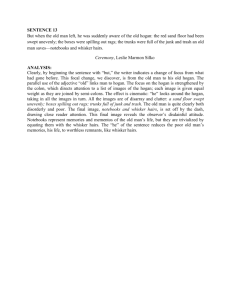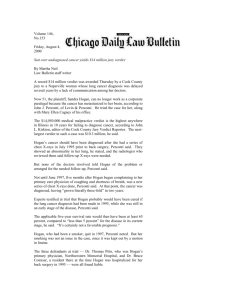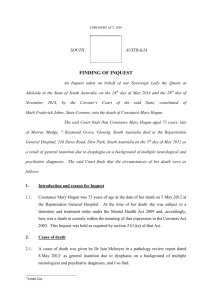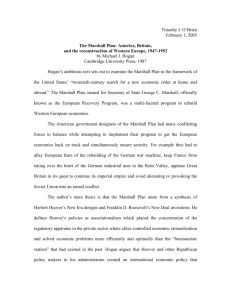Sociology 411
advertisement
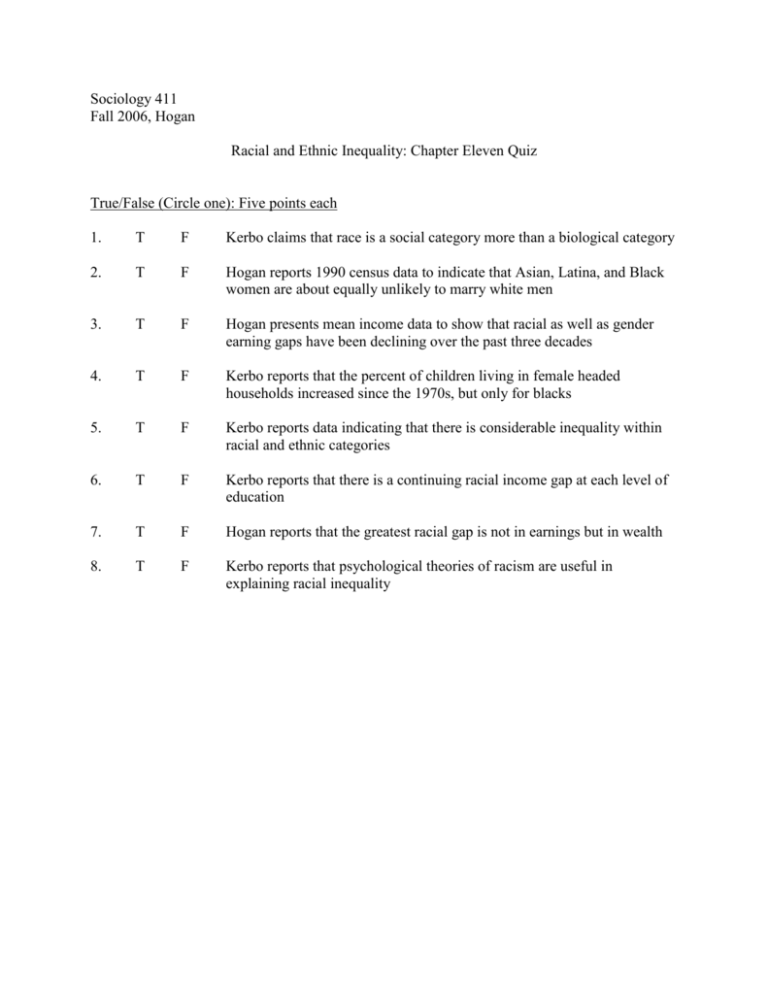
Sociology 411 Fall 2006, Hogan Racial and Ethnic Inequality: Chapter Eleven Quiz True/False (Circle one): Five points each 1. T F Kerbo claims that race is a social category more than a biological category 2. T F Hogan reports 1990 census data to indicate that Asian, Latina, and Black women are about equally unlikely to marry white men 3. T F Hogan presents mean income data to show that racial as well as gender earning gaps have been declining over the past three decades 4. T F Kerbo reports that the percent of children living in female headed households increased since the 1970s, but only for blacks 5. T F Kerbo reports data indicating that there is considerable inequality within racial and ethnic categories 6. T F Kerbo reports that there is a continuing racial income gap at each level of education 7. T F Hogan reports that the greatest racial gap is not in earnings but in wealth 8. T F Kerbo reports that psychological theories of racism are useful in explaining racial inequality Multiple Choice (circle one): ten points each 1. . Hogan defines race as a. a cultural characteristic of persons whose ancestors came from the same continent or subcontinent (e.g., sub-Saharan Africa) b. a social category defined by exogamy rules c. a phenotype that cannot be adequately traced to a genotype d. like gender, a social status derived from a biological status 2. Generally, Hogan distinguishes race and ethnicity (as opposed to class and gender) by relations of a. opportunity hoarding b. exploitation c. production d. reproduction 3. Kerbo and Hogan characterize change from 1983 to 2002 in the occupational representation of blacks and Latinos as indicating a. substantial progress for blacks but not Latinos b. substantial progress for Latinos but not for blacks c. no change in labor force representation for blacks or Latinos d. some improvement, indicating modest gains for blacks and Latinos at the top of the occupational structure 4. Hogan re-introduces data to remind us that racial inequality in income a. is greater than gender inequality b. is increasing more rapidly than gender inequality c. is substantially less than the racial gap in wealth d. is substantially less and is declining more rapidly than the gender gap 5. Kerbo (and Hogan) associate racism with a. capitalism b. Protestantism c. industrialism d. colonialism 6. Hogan reports data on foreign born in the U.S., from the U.S. Census, Current Population Survey of 2003, which indicates that a. Europeans continue to predominate b. Asian American are the largest immigrant population c. Latin Americans are the majority d. European and Asian are the largest immigrant populations 2
